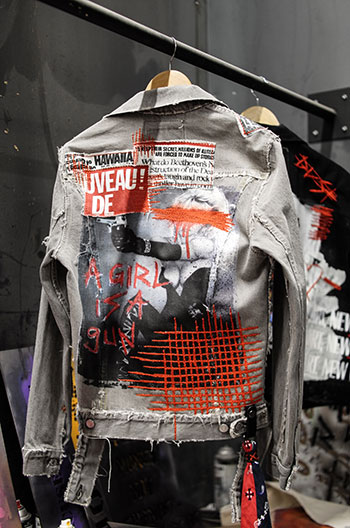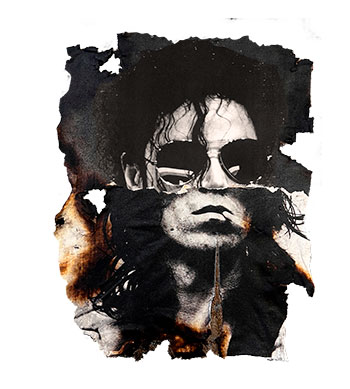We know you come from a background in Science, but you’ve also worked on Architectural Projects. How did you end up in the Fashion world?
Science was quite rigid. Architecture is less rigid, but fashion is total freedom.
In the Sciences and as a lab researcher – you are stuck with your one place of work; your facility, university or institution that you are working with.
As an architect, you are stuck with the building codes of the city or country that you are working with. There is more freedom than the Sciences, but you are still restricted.
Fashion has full freedom in its creativity. You are only limited with what you set your boundaries to. It has the freedom in design, structure, expression; Freedom in cultural relationships and significance; the global agendas – what’s important around the world.
This has been a slow evolution, and freedom of expression and creativity was always the direction that my soul was really looking for. Through my own personal growth I have evolved to who I am without forgetting the rigors of the past, and now I want to bring this knowledge to the future.
When it comes to design and Architecture, what is your approach?
I, still in my heart, is a scientist. When it comes to design and architecture, all of my projects start with a study of precedent. Researching about what is possible and plausible, understanding the material and its feasibility to inform the design and what could actually be developed and built.
Understanding the end-user and the function of the project is huge to me. When it is personal, understanding the individual and what they try to express is how the artistic features of the project comes alive. In addition to marrying the technology of the past, and my obsession of the past with the interest in the future and potential it brings; that is what creates the juxtaposition of the work which makes each project truly unique.
What’s the concept behind Dust of Gods?
Dust of Gods creates wearable art using grails, dead stock and vintage garments. Each piece is up-cycled, conceptualized, designed and created by hand. We harness the energy spent on things around us (in this case, clothing) and use it to resurrect and extend its life.
In everything we wear, someone has already put so much effort in creating that garment behind the scenes so why waste that? From conceptualizing, sampling, fitting, shipping, there is extensive energy and materials used, and our aim is to use what is given to us and build upon it.
How was the brand born?
Dust of Gods was born out of an Architectural project I was working on and the client had also asked me to create a merchandise for the concept. Instead of taking the path that everyone takes to outsource and mass produce, I decided to experiment with my old clothes and create merchandise out of that. The rest is history.
What do you think makes Dust of Gods such a unique, innovative brand?
As I studied Molecular Biology and Biomedical Engineering before architecture and design, it is evident that what makes any and every species unique is their DNA. When the concept of Dust of Gods was being developed, its DNA was written in such a way that it can never be replicated in a mass-production manner.
It is our studio, technology, and people that work with me who come from all disciplines that inform the product which truly makes it unique and innovative. Every product that comes out of DOG is conceptualized, sourced, developed, and produced in a collaborative manner that is done all in-house.
Can you tell us more about the new DoG collection “Ashes to Dust”?
Spending my time during university here in Spain and being fascinated by the Gothic Quarters and the effect it has in Architecture, culture, fashion and branding of the city as a whole – we wanted to bring the darkness of Gothic design into this project. Hence the use of fire, material and the “obscurity” we created.
We also wanted to find a way to communicate to the larger audience, so we connected it to popular culture and icons, where we created art and transferred into pieces of wearable art.
What do you think Dust of Gods and Santa Eulalia have in common?
Santa Eulalia has been around since 1843, and the most important thing to me is History. This brand, store, concept has withstood many different wars, eras and time, and that longevity is also what Dust of Gods is about. What we try to say is don’t destroy and throw anything out, let’s take it, re-imagine it and add longevity to it. Harnessing existence, celebrating the core, and evolving alongside what is happening around the world is what Dust of Gods and Santa Eulalia have in common.
Speaking of collaborations, you’ve worked with names such as Steve Aoki or Jason Derulo. Is there a collaboration that you feel especially proud about?
That’s hard to say because I feel proud about every collaboration with each person I have worked with. What’s more important to me is creating bonds, relationships and friendships – which eventually evolves into more creative work in different disciplines with these individuals
For example, meeting Neymar a few years ago and creating a few custom jackets for him and his love of Batman has grown into many other projects for him. Now we are discussing about visiting his new home in Paris and doing interior design, and art for his place.
What is next for you?
COVID put a hold on our progress, but we’ve used that time to re-assess and strengthen our core values and beliefs of what the brand is about – which ended up working quite well for us. In 2019, we had opened out first flagship in Beijing and were in the process of opening a few new locations – but once COVID happened, we had a moment to sit back and reflect and manifest on what we really want to do.
Now we are ready to go global. We have a store in Sydney, Australia and in Toronto opening. Beyond that, our next big project will be New York Fashion Week.
We are also expanding our movement – not just about the brand, but to work with local colleges and university, and fashion institutes like Seneca Fashion to engage the new graduates and make them believe in the same thing that we believe. This is one of the many ways that will enforce this movement.

